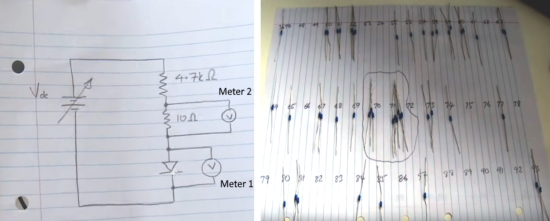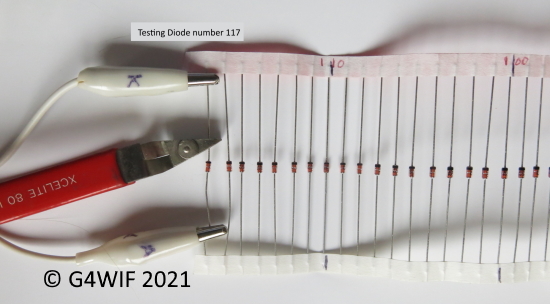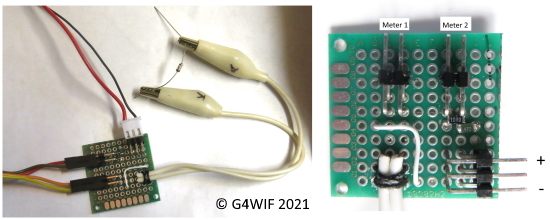Home
April 2021 - Schottky Diode Matching
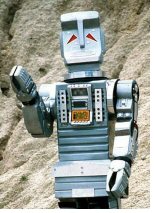 If the character on the left is familiar to you - then I've probably "found my tribe". :-)
If the character on the left is familiar to you - then I've probably "found my tribe". :-)
This was Marvin (the paranoid android) from the Hitchhikers Guide to the Galaxy. He was known to complain about a "terrible pain in the diodes down my left side".
And that's the tenuous link to the subject of this article. Diodes - and matching them.
The reason behind why I would want to is once again because of the super Youtube channel of Charlie Morris ZL2CTM - In his series about building an SSB transceiver, he describes how to make a diode ring mixer. He bases it on carefully matched Schottky diodes taken from a large sample. He shows a simple set up using just a couple of resistors with measurement using two multi-meters.
Charlie adjusts the supply voltage until he measures 10 mV across the 10 ohm resistor. That means that the current flowing through the diode under test is 1mA. He then measures the voltage across the schottky diode and then the test is repeated with all the diodes. The results recorded. by laying his diodes out on a sheet of paper - and thus he found a set of four diodes.
Once four closely measured diodes were selected - this is the mixer circuit that they went into.
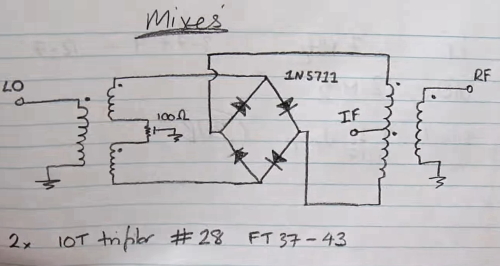
Here are the two links to Charlie's mixer videos on Youtube one and two.
My method was based on the scary realisation that having separated all those diodes they were never going to stay glued to a sheet of paper for the next time I needed them - and storage was going to be a problem in my limited space.
So I did not separate them at all - and instead I numbered them still connected to the strip.
Here shown below I have the clips of my little test jig connected to the last diode on the strip. I have numbered them every ten diodes. I discovered that when power was connected to the diode the voltage crept up slowly and didn't stabilize for around 10 seconds. I discussed this with Charlie and he agreed that it was probably the diode heating up slightly.
So I tried clipping a heat sink to the lead and that had a positive effect of keeping it cool. I could take a reading right away. My little test jig looks like this:
As an experiment, I used both my new multi-meter which allowed resolution to four decimal places, and my old meter in parallel in the "Meter 1" position. This was to see if a set of four diodes that measured more closely as being identical performed better than a set of four that were a little further apart.

The results were recorded into a spreadsheet (part of which is shown below). The left hand set of results are from the tests. The right hand data set is having sorted the results ascending on the "meter 1" column

Of the sorted data set it seems that diodes (shown with a green background) number 1,79,87 and 43 would constitute a close match. In this case the results measured on the old three decimal place meter would have been close too.
However, the results shown at the top with a blue background show that there was a wider spread in actuality when you compare the four decimal place meter readings. I got mine from Amazon for £35.99 (delivered).
There were quite a few sets found in the tested sample of 117 schottky diodes. So providing that I don't lose that spreadsheet I can dip in and take four more at a later date.
